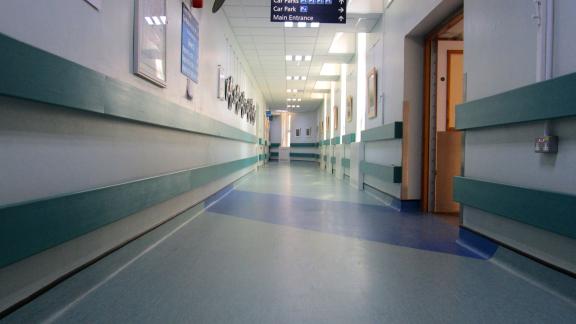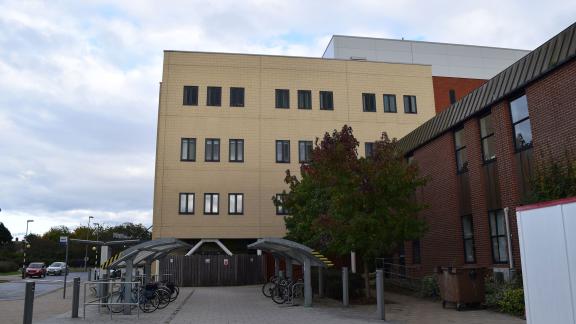Analysis: The state of the elective recovery in numbers

At a glance
- The elective and diagnostic waiting list rose to over 7 million for the first time in figures released yesterday.
- A mix of pressures including emergency care flow, the crisis in social care, capital underinvestment and workforce challenges are hampering the service’s ability to meet elective targets.
- The NHS completed 99.6 per cent of pathways in August 2022 when compared to August 2019 - an improvement on recent months. Yet the service remains some way off targets to deliver 110 per cent of activity in 2022/23 compared to the 2019/20 baseline.
- This piece aims to articulate the elective recovery challenge using the latest numbers, the progress made since the heavy disruption of services at the onset of COVID-19, and the pressures affecting the NHS’ ability to meet key elective targets.
The challenge
October’s data release shows that in August the elective and diagnostic waiting list had risen to over 7 million for the first time (now at 7.07 million when estimates for missing data are factored in). The numbers show a rise of over 160,000 month-on-month, with the total number on the waiting list 58 per cent higher than the number of people waiting for treatment on the cusp of the pandemic (4.42 million).
In a bid to combat the rising waiting list, NHS England set a target for 2022/23 of delivering activity levels of 110 per cent compared to the pre-pandemic baseline. This is alongside targets for certain groups of patients, such as 104-week waiters (the bulk of which were seen before the end of July 2022), eliminating 78-week waiters by April 2023 and waits over a year by March 2025 as per the delivery plan for tackling the COVID-19 backlog of elective care.
Progress
Progress against the 110 per cent activity target has been slow. The below chart shows the percentage of completed referral-to-treatment pathways nationally, against the 2019/20 baseline. This is calculated based on the number of patients who started treatment following admission to hospital, as well as non-admitted patients, and weighted for the number of working days.
Cycling through the charts below also shows the number of joiners to the waiting list in comparison to pre pandemic and the knock-on effect that completing fewer pathways is having on the overall waiting list. And while it’s true new joiners to the waiting list have risen significantly after the dip at the onset of the pandemic, they have remained just below pre-pandemic levels and there have not been clear signs of the ‘missing’ patients who did not present during the pandemic, which would swell the waiting list further.
The barriers
Emergency care pressures
Our members consistently tell us that emergency care pressures cause a knock-on effect on the amount of elective care they are able to complete, with the focus naturally turning to emergency care over planned care.
Challenges in emergency care pathways are clear in the data; just 56.9 per cent of patients attending type 1 A&Es in September were admitted, transferred or discharged within four hours (the worst on record, compared to 76.9 per cent at the same time in September 2019). This is not due to a significant increase in the number of patients presenting at major emergency departments; there was an average of 63,929 attendances per working day in September 2019 compared with 62,027 in the same month in 2022.
As we have highlighted previously, it is because of problems with hospital flow. Challenges in discharging patients remain: on an average day in September, over 13,300 patients out of the 22,300 medically fit for discharge remained in hospital despite no longer meeting the criteria to reside; that means on a typical day 59.7 per cent of medically fit patients couldn’t be discharged. This is partly caused by the collapse of domiciliary care, the range of services put in place to support people in their own homes. These problems discharging patients are inextricably linked to the issues at the front door. If the NHS cannot discharge healthy patients, it has less capacity to admit and care for sick patients.
These front door pressures are emphasised by ambulance waiting times: category 1 ambulances (major incidents where there is a threat to life) took an average of 9 minutes and 19 seconds across England, compared in September, compared to 7 minutes 15 in the same month of 2019, while the category 2 average (which includes serious incidents such as heart attacks and strokes) was 47 minutes and 59 seconds, compared to 22 minutes and 23 seconds at the same time in 2019). The deterioration in response times is exacerbated by an inability to handover patients at the front door of emergency departments, with those ambulances waiting unable to respond to incidents in the community.
Capital
The estates returns information collection released on 13 October showed a maintenance backlog of £10.2 billion, of which £1.8 billion was high risk (where repairs/replacement must be addressed urgently to avoid catastrophic failure, major disruption to clinical services or deficiencies in safety liable to cause serious injury or prosecution), and £3.5 billion of ‘significant’ risk (where repairs/replacement are required in the short term so as not to cause undue concern to statutory enforcement bodies or risk to healthcare delivery).
These numbers show the underinvestment in capital the NHS has experienced for the last decade, and in some cases our members are being forced to make do with crumbling estate while capital projects that would improve efficiency and capacity for the elective recovery are waiting for funding. Other members have also highlighted the lack of theatre space as a constraint to increased surgical procedures.
Workforce
The often-reported figure of 132,000 vacancies is a concern, but it’s also about having the right people. Numbers in some areas such as total nurses and doctors have been on an upward trajectory, bolstered by international recruitment. Yet our members report concerns around retention and gaps in certain roles affecting the speed of the elective recovery.
One example is anaesthetists, evidenced by the Royal College of Anaesthetists which estimated that the current shortfall of 1,400 consultant and SAS anaesthetists could result in as many as one million surgical procedures being delayed every year.
A trust in the north west meanwhile highlights concerns in the speed it has been able to recruit to radiology roles, also shown by the Royal College of Radiologists which estimated a shortfall of over 1,600 radiologists, a shortfall which is continuing to rise.
Other concerns highlighted included the levels of histopathology staff within certain trusts, and numbers of administrative staff to book patients in.
Conclusion
This winter we expect to see the elective waiting list climb further. There are three key areas where the NHS needs government intervention to work more efficiently.
Firstly, on social care, it is hard to see a considerable upturn in NHS productivity without investment in social care staff. Challenges in domiciliary care in particular mean hospital flow remains hampered by an inability to discharge healthy patients waiting for packages of care at home. This is exacerbating the crisis in emergency care and creating a situation where healthy patients who could be happier and healthier at home are in hospital beds, while sick people wait on lists for elective care.
Secondly, on capital investment, where the NHS has been starved for a decade. Our members tell us of fully costed plans for new hospital wings that will increase their capacity and productivity, where they are still waiting for sign off on funding. Yesterday’s release of the estates return information collection showed a maintenance backlog of £10.2 billion, with £1.8 billion ‘high risk’ and £3.5 billion ‘significant risk’. Projects that will increase efficiency are vital if the NHS is to make inroads into the elective backlog, but in many cases the NHS is making do with crumbling estates.
And thirdly, on workforce. It is regularly noted the NHS carries vacancies of over 130,000, despite improvements in some areas, such as levels of nursing. But even leaving these vacancies aside, staff are exhausted and efforts to improve retention on top of progress to recruit need to be redoubled. The link between workforce shortages and waiting lists is clear, with one NHS leader telling us this week that they had been asked to review elective lists over the next four weeks and identify patients who may require bloods as blood stocks are low (in view of cancelling non-urgent treatment), in part due to vacancies within the NHS Blood and Transplant service in England. It’s about having the right people in place - members have told us of challenges with specialist workforce availability in diagnostics (radiology, histopathology) as well as anaesthetists availability and capacity.



